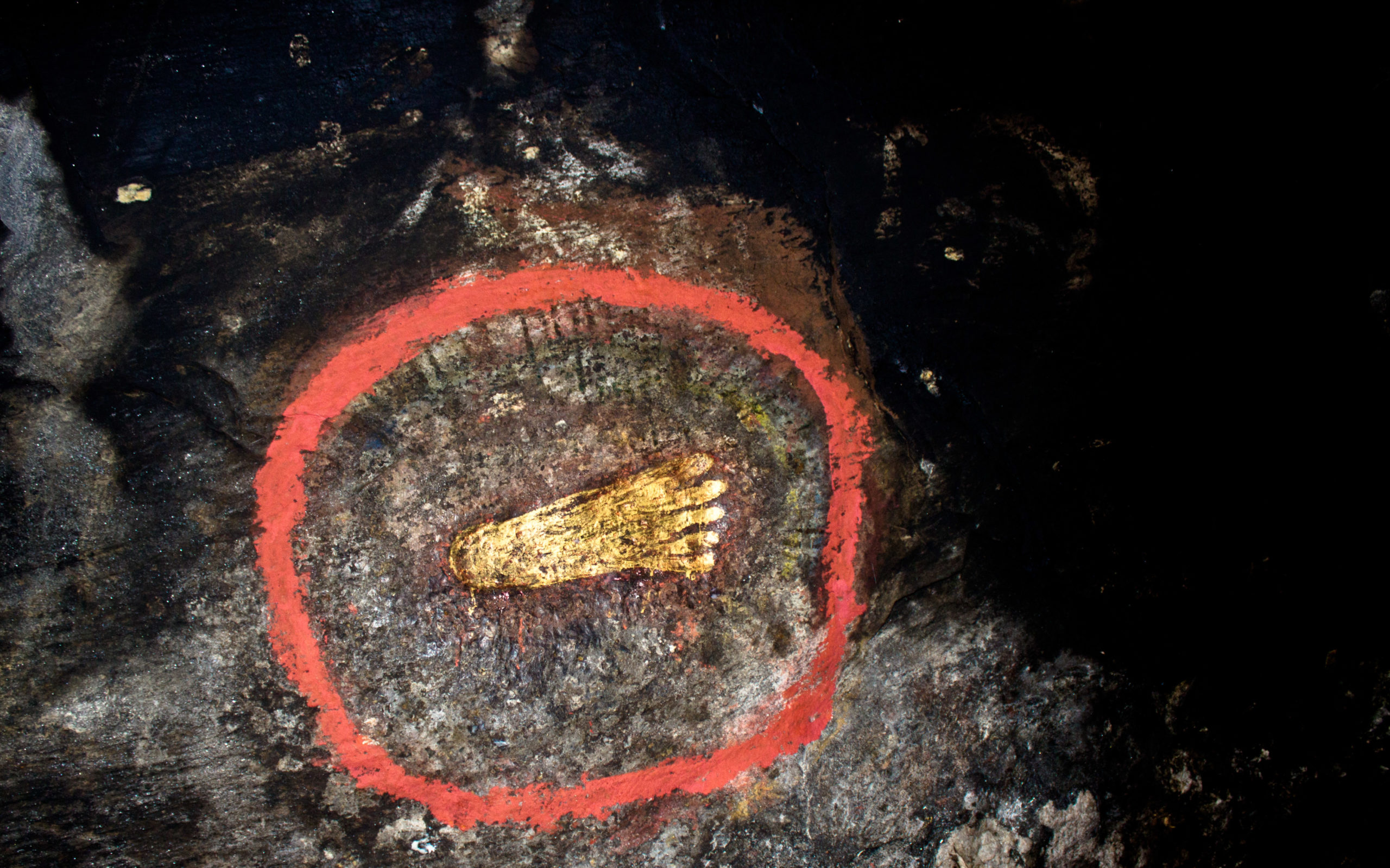One of Garchen Rinpoche’s favorite quotes is from a Milarepa song that goes in part:
Ema If there were no sentient beings,
From where would Buddhas come?
Without causes, effects cannot happen.
By the force of the truth of relative reality,
There is cyclic existence and the state of peace.
The Sage taught the existence of all possibilities.
Appearances that materially exist
And the reality of their non-existent emptiness
Are of one taste, inseparable in essence.
Views of self and others do not really exist.
Everything is truly a vast union.
The wise who have such realization
See not consciousness, but primordial wisdom.
Seeing not sentient beings, they see Buddhas.
Not conditioned things, but their nature they see,
And thus appears compassion’s energy.
Fearlessness, power, and perfect memory,
Like precious jewels, one gains such qualities.
This is the level of understanding
That belongs to a yogi like me.
I remember discussing Dzogchen, an experiential meditation system designed to offer an understanding of the deepest levels of reality, with Traga Rinpoche over a decade ago. I started asking about the signs of realization of the practices of trechö and thögal. Trechö (cutting through) is a practice by which one cuts completely through the streams of ordinary concepts into the uncontrived naked nature of the mind. Thögal (direct transcendence) is a practice by which one builds upon the understanding of trechö, through a variety of techniques, to directly see with one’s own eyes the spontaneously present inner pure nature of reality that is normally hidden from us in this world. Thus, one directly transcends ordinary dualistic vision to see the actual infinite sphere of the selfless universe as it is. According to tradition, the fruition of the thögal practice is the attainment of the rainbow body or body of light, in this very lifetime or at the time of death. This is a type of practice that might even perk Yoda’s ears.
I had spoken with Garchen Rinpoche on occasion before about these things, and he replied that while he had some understanding of tregchö, due to the kindness of his teacher Khenpo Münsel, he did not really practice thögal and thus couldn’t really comment on any realization of such. In part, Garchen Rinpoche was being very humble and honest. The formal practice of thögal requires a number of preliminary requisites and years spent in retreat to master. So again, as I was asking Traga Rinpoche about the signs of the realizations of these practices, I mentioned to him that Garchen Rinpoche conveyed to me that he really had no such understanding or realization. Traga Rinpoche laughed at me and said,
“You really don’t know even your own Lama! Of course, it is difficult to say from the outside what Garchen Rinpoche has or has not formally practiced in his life. However, what we can see is how he treats others. I don’t know of anyone else alive that has the same level of pure perception as Garchen Rinpoche. If you look closely at how he treats others, how he talks to others, he is always treating them as if they are truly enlightened deities. He sees them all as potential Buddhas. Other people even get frustrated with Garchen Rinpoche, because he regularly does not see fixed faults in others. Sure, in thögal practice there are many signs along the way as road markers, but the real signs are the increase of love, compassion, and pure perception. When you see all reality as a pure mandala filled with deities, this is the culmination of awareness.”
I remember one occasion when Garchen Rinpoche used Milarepa’s song above. There were a few students of his at an interview with him that I was translating. The question given to Garchen Rinpoche was how can one tell for sure whether or not one is a emanation of an enlightened being (a tulku or nirmanakaya)? Garchen Rinpoche replied,
“It is simple. It all depends on the state of our minds. If we see things purely, the entire outer realm of the universe and all the beings within it are manifestations of enlightenment. There is not a single being in the universe that does not have Buddha nature. When we look at others and focus on their mundane attributes, faults, and so forth, we are blind because we do not see their infinite potential. For all we know, in truth, they might be Buddhas. A true nirmanakaya Buddha sees the infinite potential of every being in the universe. Thus, to truly become a nirmanakaya, we must follow Milarepa’s advice, ‘Do not see sentient beings, see Buddhas.’ When we look at appearing phenomena without dualistic grasping, we see the pure display of colors, shapes, light, and energy. This is the sambhogakaya (enjoyment body) mandala. All the aggregates and elements are ultimately the pure dance of the five herukas and the five dakinis. When we recognize that everything arises from the empty nature of the mind, we understand that nothing ever truly leaves the dharmakaya (ultimate body of reality). It is up to us, reality is flexible. If we recognize the true nature of things, everything becomes enlightenment. If we don’t recognize this, then we continue to wander in cyclic existence as an ordinary sentient being.”
To conclude, I’ll leave you with a prayer composed by Garchen Rinpoche on taking refuge. Normally, in Buddhism one takes refuge in the Buddha, Dharma, and Sangha and other enlightened sources of refuge. However, like the above picture of Milarepa’s footprint in solid stone indicates, reality is not necessarily fixed. With pure perception of infinite potential, even sentient beings might be Buddhas. And in that, Garchen Rinpoche takes refuge.

